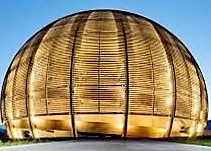Speaker
Description
Theory [1,2] predicts that lifetimes of beta-radionuclides can change dramatically as a function of their ionization state. Fully stripped ions in storage rings [3] have proven to change their lifetimes by several orders of magnitudes. The PANDORA (Plasmas for Astrophysics, Nuclear Decay Observation and Radiation for Archaeometry) [4,5] experiment is conceived to measure, for the first time, nuclear β-decay rates in stellar-like conditions as a function of temperature (i.e. using magnetized laboratory plasmas). These measurements will be extremely relevant for those radionuclides involved in nuclear-astrophysics processes (BBN, s-processing, CosmoChronometers, Early Solar System formation). PANDORA is based on a compact B-minimum magnetic trap (with Bmax = 3.0 T), where plasmas are heated by microwaves via Electron Cyclotron Resonance at 18-21 GHz up to densities $n_e\sim10^{11}\div10^{13} cm^{-3}$, and temperatures $T_e$~0.1-30 keV. The decay rates can be measured as a function of the density and temperature, whose combination determines the charge state distribution of the in-plasma ions. This contribution will describe the overall setup including a 14 HpGe detectors array for deducing the decay rates and a plasma multi-diagnostics system (RF interferopolarimeters, optical and X-ray spectroscopy and imaging) for the simultaneous measurement of plasma density and temperature. The setup will also allow to measure plasma optical opacities that are relevant for the kilonovae scenarios. Tens of physics cases of potential interest have been singled out, with a shortlist of priorities including $^{94}$Nb ($t_{1/2} ~ 2 x10^4 y$), $^{134}$Cs ($t_{1/2} \sim 2,05 y$) [6], $^{176}$Lu ($t_{1/2} \sim 3.76x10^{10} s$). In particular, it is still debated if 176Lu is a cosmo-thermometer or a cosmo-chronometer; $^{134}$Cs investigation is relevant for the production of the s-only isotopes $^{134}$Ba and $^{136}$Ba; and $^{94}$Nb is relevant for determining the abundance of $^{94}$Mo in single or binary systems of stars. The TDR of the project was released in 2021. Discovery potentialities will be presented in this paper, as well as the further implementation of advanced diagnostics and the theoretical analysis of the expected decay rates, which is now carried out as a “virtual experiment” including predictions of the β-decays due to the change of the atomic structure (ionisation and excited states) in a self-consistently simulated plasma scenario reproducing laboratory features, with the aim to characterize the overall experimental sensitivity of the setup.
[1] K. Takahashi and K. Yokoi, Nuclear Physics A 404(3):578-598 · August 1983. DOI: 10.1016/0375-9474(83)90277-4
[2] K. Takahashi and K. Yokoi, Beta-decay rates of highly ionized heavy atoms in stellar interiors, Atomic Data and Nuclear Data Tables. Volume 36, Issue 3, May 1987, Pages 375-409 DOI: https://doi.org/10.1016/0092-640X(87)90010-6
[3] Y. A. Litvinov and F. Bosch, 2011 Rep. Prog. Phys. 74 016301
[4] D. Mascali et al., European Physical Journal A 03/2017; 53(7)., DOI:10.1140/epja/i2017-12335-1
[5] D. Mascali, et al. Universe 2022, 8, 80. https://doi.org/10.3390/universe8020080
[6] Palmerini S. et al., Presolar Grain Isotopic Ratios as Constraints to Nuclear and Stellar Parameters of Asymptotic Giant Branch Star Nucleosynthesis, The Astrophysical Journal 2021, 921 (1), 7
